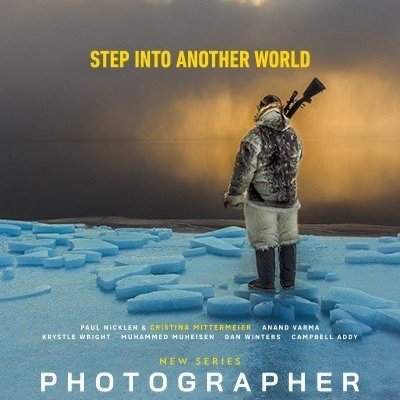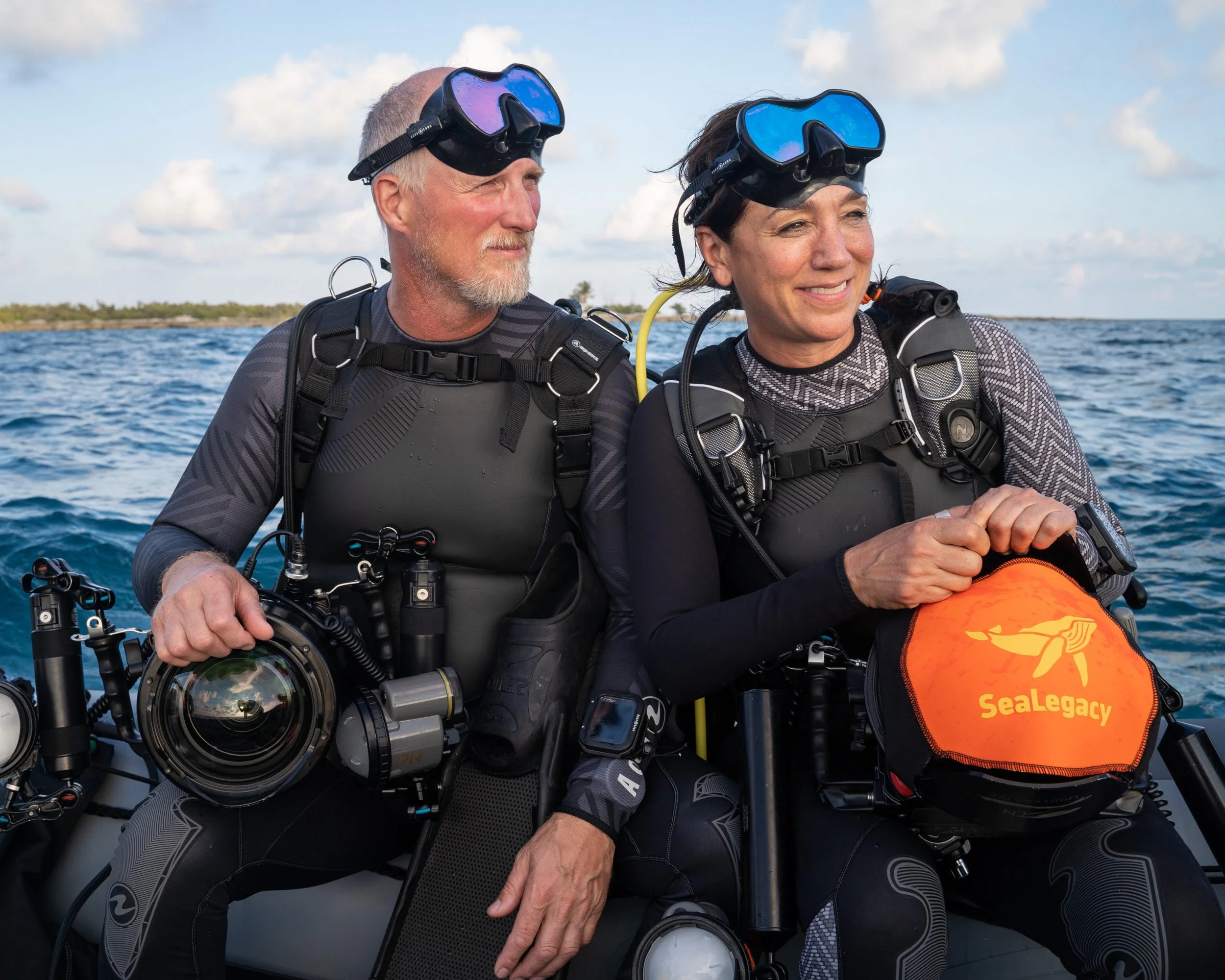Overcoming Adversity Through the Lens: Dan Winters' Journey
Episode 3 of National Geographic's Photographer with Dan Winters unveils a riveting blend of art, personal struggle, and resilience, showcasing photography's power to tell profound stories beyond the visible.
In the world of photography, where images are crafted to speak volumes and capture moments that transcend the constraints of language, episode 3 of National Geographic’s Photographer series featuring Dan Winters stands as a monumental testament to the art. It is an episode that not only showcases the breathtaking craft of photography but also threads through the personal narratives of overcoming adversities that many creators face. For enthusiasts who find solace in the click of a shutter, this episode is a profound exploration into the heart of what it means to encapsulate existence through a lens.
Dan Winters, a name synonymous with evocative portraiture and scientific exploration through photography, takes us on a riveting journey. It is his unyielding dedication to unveiling the stories hidden within the mundane and extraordinary alike that sets this episode apart. But what truly anchors the narrative is Winters' candid sharing of his personal battles with health and mental health challenges, revealing the often invisible burdens carried by those behind the lens.
This episode is a mosaic of resilience, creativity, and the relentless pursuit of capturing the unseen. Winters, with his unparalleled skill set, demonstrates the profound ability of photography to narrate the complexities of human emotion and existence. His work is not merely about creating images; it's about breathing life into each frame, making visible the invisible, and telling stories that would otherwise remain untold.
The art of seeing beyond the visible is a central theme of this episode. Winters’ approach to photography is akin to a masterclass in storytelling, where each image is meticulously planned and executed to evoke a spectrum of emotions and provoke thought. His ability to overcome personal health challenges and continue to produce work that captivates and inspires is nothing short of remarkable. It serves as a poignant reminder of the power of passion and perseverance in the face of adversity.
One of the most compelling aspects of the episode is the exploration of how Winters distinguishes his work in an era saturated with images. The quest for uniqueness in photography is a challenging one, requiring not just talent but a distinct vision. Winters exemplifies this through his innovative approaches to shoots, whether it's capturing the intricacies of scientific phenomena or the subtleties of human emotion. This episode offers a treasure trove of insights into his creative process, from conceptualisation to the execution of his visions, providing invaluable lessons for photographers at any stage of their career.
Beyond the technical prowess and creative strategies, episode 3 unfolds as a narrative rich with lessons on human resilience, the importance of perspective, and the unyielding pursuit of one's passions. It resonates not just with photographers but with anyone engaged in creative endeavours, travel blogging, or documentary storytelling. The episode is a source of inspiration, encouraging viewers to explore the depths of their capabilities and to tell stories that strike a chord across cultures and communities.
In closing, the episode transcends the traditional boundaries of photography documentaries. It is a comprehensive exploration into the essence of creating, the obstacles that creators face, and the extraordinary outcomes that result from the convergence of passion and resilience. Dan Winters, through his exceptional work and personal narrative, illustrates the significant impact photography can have as a medium for truth, empathy, and connection.
At a time when the digital age often reduces the value of an image to mere metrics of engagement, Winters’ story is a refreshing and needed reminder of the profound capability of photography to convey deeper truths. It challenges us to look beyond the surface, to capture and share the stories that define the human experience. Episode 3 of National Geographic Photographer series with Dan Winters is more than just a documentary; it is a call to view the world through a broader lens, to seek beauty in the overlooked, and to persist in our creative quests, regardless of the hurdles we face.
Anand Varma: Capturing Nature's Hidden Wonders Through the Lens
Explore Anand Varma's journey from aspiring scientist to celebrated National Geographic photographer, and how his unique blend of science and art reveals the unseen beauty of the natural world.
National Geographic's Photographer Series continues to stand out as a source of inspiration, Episode II of this series shines the spotlight on Anand Varma, a photographer whose work is a testament to the beauty and complexity of the natural world. His unique approach combines a deep scientific curiosity with a keen photographic eye, resulting in images that reveal the hidden wonders of our planet.
Anand Varma’s story is fascinating, marked by a transition from aspiring scientist to celebrated photographer. Influenced by his father’s scientific career, Varma initially aimed to follow a similar path. However, his passion for photography led him down a different road, one where he could merge his scientific interest with his creative talent. This journey underscores a profound dedication not just to capturing images but to telling the stories hidden within the natural world.
One of the episode's highlights is Varma’s project in a remote village, where he sets out to document the transformation of an egg into a chick. This task, fraught with challenges, showcases not just Varma’s technical skill but his deep respect for the natural processes he observes. His patient and careful approach allows nature to tell its story through his lens, embodying his belief that true photography comes from understanding and observation.
The episode also recounts Varma’s thrilling encounter with a tiger in the wild, a moment that perfectly encapsulates the unpredictable nature of wildlife photography. Varma recalls the experience, stating, "It's moments like these that remind you of the wildness of the world, the beauty and the danger intertwined." This encounter highlights Varma’s respect for his subjects and his commitment to capturing their essence without intrusion.
Anand Varma | Credit: National Geographic
Varma’s photography is distinguished by its fusion of artistic expression and scientific inquiry. He employs cutting-edge techniques, such as high-speed and macro photography, to unveil aspects of nature invisible to the naked eye. His work invites viewers to explore the beauty of the world in intricate detail, from the delicate structure of insect wings to the dynamic movements of birds in flight.
For those dreaming of a career in photography, Anand Varma’s journey offers valuable lessons in patience, perseverance, and the importance of respecting the natural world. His dedication to pushing the boundaries of photography, combined with his focus on conservation, exemplifies the impact one can have through their art. Varma’s story encourages aspiring photographers to explore their passions, to seek out the hidden stories in the world around them, and to approach their work with humility and curiosity.
In summing up National Geographic's Photographer Series Episode II featuring Anand Varma, we're presented with a powerful narrative about the intersection of science and art in photography. Varma’s ability to illuminate the unseen and share untold stories of nature serves as a reminder of the crucial role photographers play in conservation and education. His journey inspires us to view the world with wonder and to use our cameras as tools to explore, question, and connect with the natural world.
Watching Varma navigate both the joys and obstacles of his profession reminds us of the significant impact that individuals can make in fostering appreciation for our planet. His photography encourages us to slow down, observe the details, and appreciate the beauty that surrounds us. For anyone with a camera and a dream, Varma’s story is a beacon of motivation, urging us to pursue our interests, to discover the world anew, and to share those discoveries with others.
Photography, at its core, is more than a career or pastime; it’s a unique perspective on life, a way to understand our environment, and a means to share that understanding with the world. Anand Varma’s captivating journey through photography highlights the transformative power of the medium — not only in the striking images produced but also in the impact those images have on viewers. As we delve deeper into the experiences of National Geographic's featured photographers, let's carry forward the insights gained from Varma’s adventures: to look deeper, to uncover the extraordinary in the ordinary, and to capture the narratives that bind us together.
Through the Lens: Unveiling the World with Nicklen and Mittermeier
Explore the compelling journeys of photographers Paul Nicklen and Cristina Mittermeier, as they use their cameras to tell stories of conservation, challenge gender biases, and inspire change through visual storytelling
In the captivating world of visual storytelling, the National Geographic Photographer Series Episode I offers a deep dive into the emotional and professional journeys of Paul Nicklen and Cristina Mittermeier. These two photographers stand out not just for their exceptional skill in capturing breathtaking images but also for their commitment to using photography as a tool for environmental conservation and storytelling. Their work brings to light the beauty of remote, untouched parts of our planet, advocating for the preservation of these spaces through powerful visual narratives.
Paul Nicklen and Cristina Mittermeier's photography goes beyond mere technical excellence. They are pioneers who have mastered the art of telling stories that matter, focusing on conservation and the subtle interplay between humans and nature. Their projects often lead them to the farthest edges of the Earth, capturing moments that most of us will never get to see firsthand. Mittermeier's reflection on feeling "very alive when I am vulnerable, uncomfortable, and a little bit scared" speaks volumes about the ethos of their work; it is in these moments of uncertainty and exposure to the elements that true artistic and personal growth happens.
Becoming recognised in the competitive field of photography can be an uphill battle, filled with challenges and moments of self-doubt. Mittermeier’s recount of the significance of validation in this journey highlights a significant milestone — the transition from seeing oneself as an aspirant to being recognised as a professional. This recognition is not just about personal achievement; it's about having one's passion and dedication acknowledged by others, affirming the impact of their work.
Paul Nicklen & Cristina Mittermeier | Credit: National Geographic
The series also sheds light on the gender dynamics within the photography industry. Historically, women have faced significant barriers, often being relegated to roles that support rather than lead. Mittermeier's experiences underscore the ongoing battle against these biases, pushing for a space where women are recognised for their contributions as photographers with unique perspectives and stories.
Assistant photographers play a critical yet often overlooked role in the storytelling process. Mittermeier describes them as "fixers," they are pivotal in bringing a photographic story to fruition. Their work involves more than just assisting; it's about facilitating the creation of a narrative, working behind the scenes to ensure that the lead photographer's vision is realised.
For Mittermeier and Nicklen, photography is more than a profession or an artistic outlet; it's a calling. They strive to create images that are not just visually stunning but also meaningful and impactful. Their goal is to produce work that resonates on a deeper level, inspiring change and shedding light on issues that demand attention. Through their lenses, they seek to tell stories that might otherwise go unnoticed. They use their craft to advocate for environmental conservation and raise awareness of our planet's fragility.
Nicklen beautifully sums up their mission, emphasising photographers' role as storytellers who have the power to influence narratives. With their cameras, they control the portrayal of their subjects, crafting stories that can inspire and hope. This perspective on photography highlights its potential not just for artistic expression but as a powerful medium for advocacy and social change.
In conclusion, the first episode of the National Geographic Photographer Series, has been nothing short of a revelation for me. As a passionate photographer, delving into the ‘why’ behind the captivating images these photographers produce has been an enriching experience. Their commitment to storytelling, conservation, and creating a deeper connection between the viewer and the subject has profoundly resonated with me, offering new perspectives on the power and purpose of photography.
This episode has not only been a captivating viewing experience but also an educational journey into the hearts and minds of two of the world’s most influential photographers. It underscores the importance of understanding the motivation behind each shot and how photography can be used as a force for good, igniting change and fostering a deeper appreciation for our planet.
For anyone with a passion for photography or an interest in the stories behind the lens, I highly recommend watching this episode. Whether you're an aspiring photographer or simply someone who appreciates the beauty and complexity of our world, this series offers valuable insights and inspiration that can broaden your horizons and deepen your understanding of what it means to capture moments that tell stories, evoke emotions, and drive action.
My personal takeaway is a renewed sense of purpose and a deeper understanding of the responsibility that comes with photography. It’s a powerful reminder that through our lenses, we have the opportunity to tell stories that matter, to connect with others on a profound level, and to contribute to the preservation of our beautiful planet. This episode is a must-watch for anyone looking to explore the depths of photography and its impact on both the individual and the world at large.
A Fine Art Photographer's Guide: 10 Essential Tips for Beginning Your Art Collection Journey
A fine art photographer shares 10 essential art collecting tips for beginners, focusing on limited editions, trusting personal taste, the impact of larger prints, framing, repetition, consulting, and more
As a fine art photographer, I've spent countless hours exploring the depths of creativity and expression. Each photograph has its own story, its own unique fragment of the world, captured and preserved in time. This experience has taught me not just about creating art, but also about appreciating and collecting it. Today, I want to share with you some invaluable insights that will help you embark on your own journey into the world of art collecting.
1. The Allure of Limited Editions
In the realm of art collecting, limited edition pieces hold a special place. They're like rare gems, their value heightened by their scarcity. Unlike mass-produced artworks, limited editions offer an exclusive experience, a connection between you and the artist that is shared by only a select few. They are tangible proof of your commitment to the arts, a badge of honor that distinguishes you as a true patron. As a beginner, acquiring limited editions can be an exciting entry point into the world of art collecting.
2. Trusting Your Aesthetic Instincts
Art, in its purest form, is a reflection of the soul. It speaks to us in ways words often fail to, stirring emotions and sparking thoughts within our deepest selves. As such, your personal taste plays a pivotal role in your art collecting journey. Trust your instincts. If a piece moves you, if it speaks to you in a way that nothing else does, then it deserves a place in your collection. Remember, the primary purpose of collecting art is to enrich your life, to surround yourself with works that inspire, challenge and delight you.
3. The Impact of Size
Size matters, especially when it comes to art. Larger prints possess a certain gravitas, a commanding presence that can transform any space into a personal gallery. They draw the eye, becoming conversation pieces that provoke thought and admiration. While they may require a more substantial initial investment, the aesthetic return can be truly rewarding.
4. Framing: The Art Within an Art
A frame is more than just a protective border for an artwork. It's an extension of the piece itself. The right frame can amplify a work's visual appeal, complementing its colors, enhancing its textures, and accentuating its beauty. On the other hand, the wrong frame can distract from the artwork, diminishing its impact. As such, it is worth consulting with a professional framer who can guide you on selecting the perfect frame that harmonizes with your piece.
5. The Power of Repetition
Repetition is a potent tool in art. It creates rhythm, establishes harmony, and adds depth to a composition. In your collection, repeating elements - be it color, form, or subject matter - can establish a cohesive theme, making your collection more visually compelling and personally meaningful. It also provides a sense of direction for future acquisitions, helping you build a collection that tells a coherent story.
6. The Value of Art Consultants
Navigating the art market can be a daunting task. This is where art consultants come in. Armed with extensive knowledge and deep connections within the art community, they can provide invaluable insights and advice. They can introduce you to emerging artists, guide you towards pieces that align with your tastes and budget, and even negotiate purchases on your behalf.
7. Learning the Language of Art
Art has its own language, a lexicon of terms that describe techniques, styles, periods, and more. Understanding this language can enrich your appreciation of artworks and equip you with the vocabulary to articulate your thoughts and impressions. It can also boost your confidence when engaging in discussions with artists, gallery owners, and fellow collectors.
8. The Importance of Research
Knowledge is power, especially in the world of art collecting. Researching artists, styles, and periods can provide a deeper understanding of the artworks you're interested in. It helps you make informed decisions, ensuring that each acquisition is not just an emotional choice, but also a strategic one.
9. Immersing Yourself in the Art Scene
There's nothing quite like experiencing art in person. Visiting galleries and attending art fairs offer opportunities to see a diverse range of artworks, from established masters to up-and-coming talents. These experiences can help refine your tastes, inspire new interests, and keep you abreast of current trends in the art world.
10. Collect with Passion
At the heart of every art collection is passion. It is the driving force that compels us to seek out new pieces, to learn about different artists, to invest time, energy, and resources into this endeavor. Remember, the art you collect should resonate with you on a personal level, reflecting your tastes, your interests, and your experiences. Because at the end of the day, you are the one who will be living with these pieces. They should bring joy into your life, provoke thought, and inspire creativity.
As you embark on your art collecting journey, remember these tips. They will guide you through the fascinating world of art, helping you build a collection that not only reflects your personal taste and aesthetic, but also brings you immeasurable joy and fulfillment.





